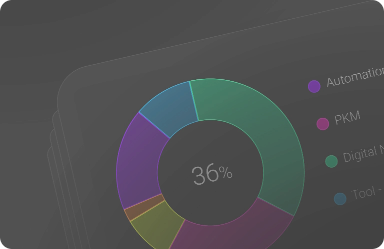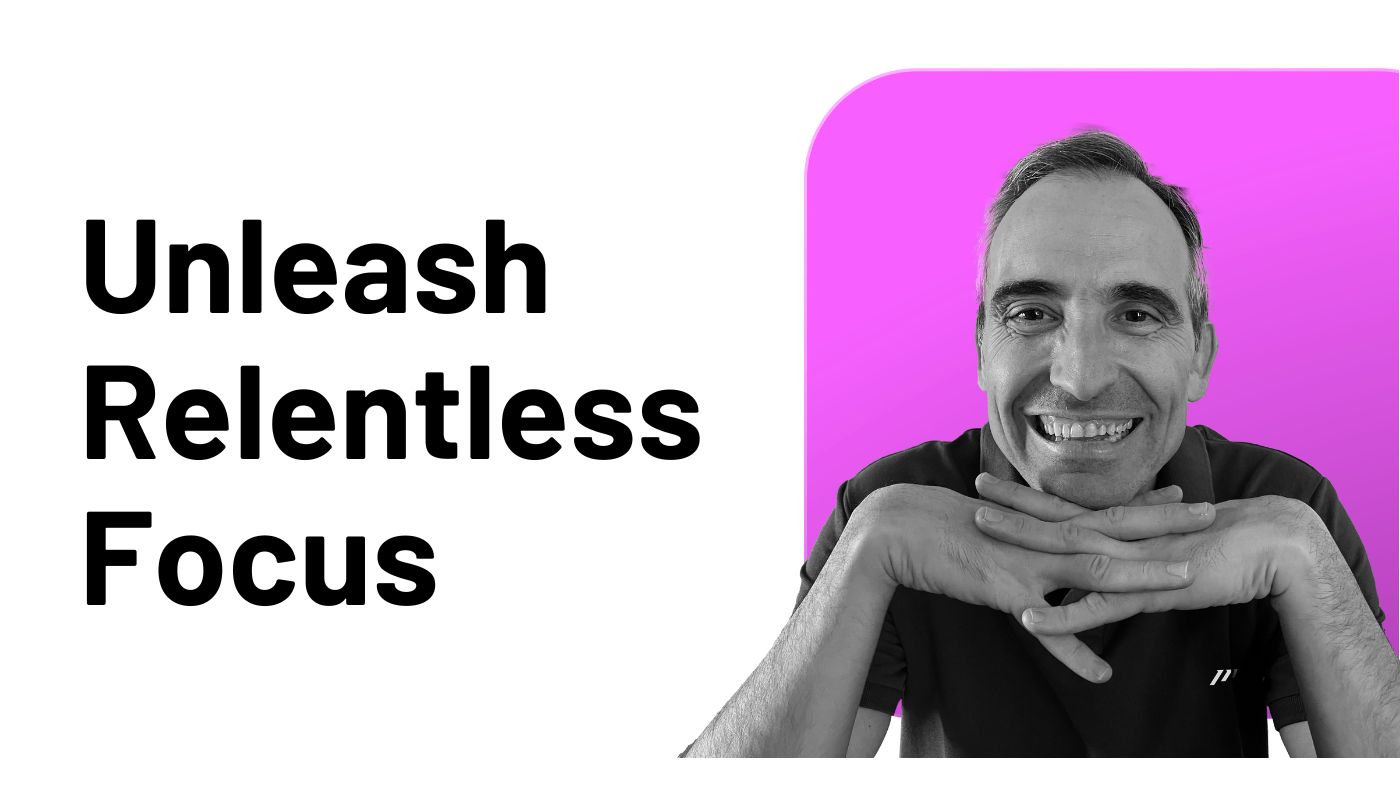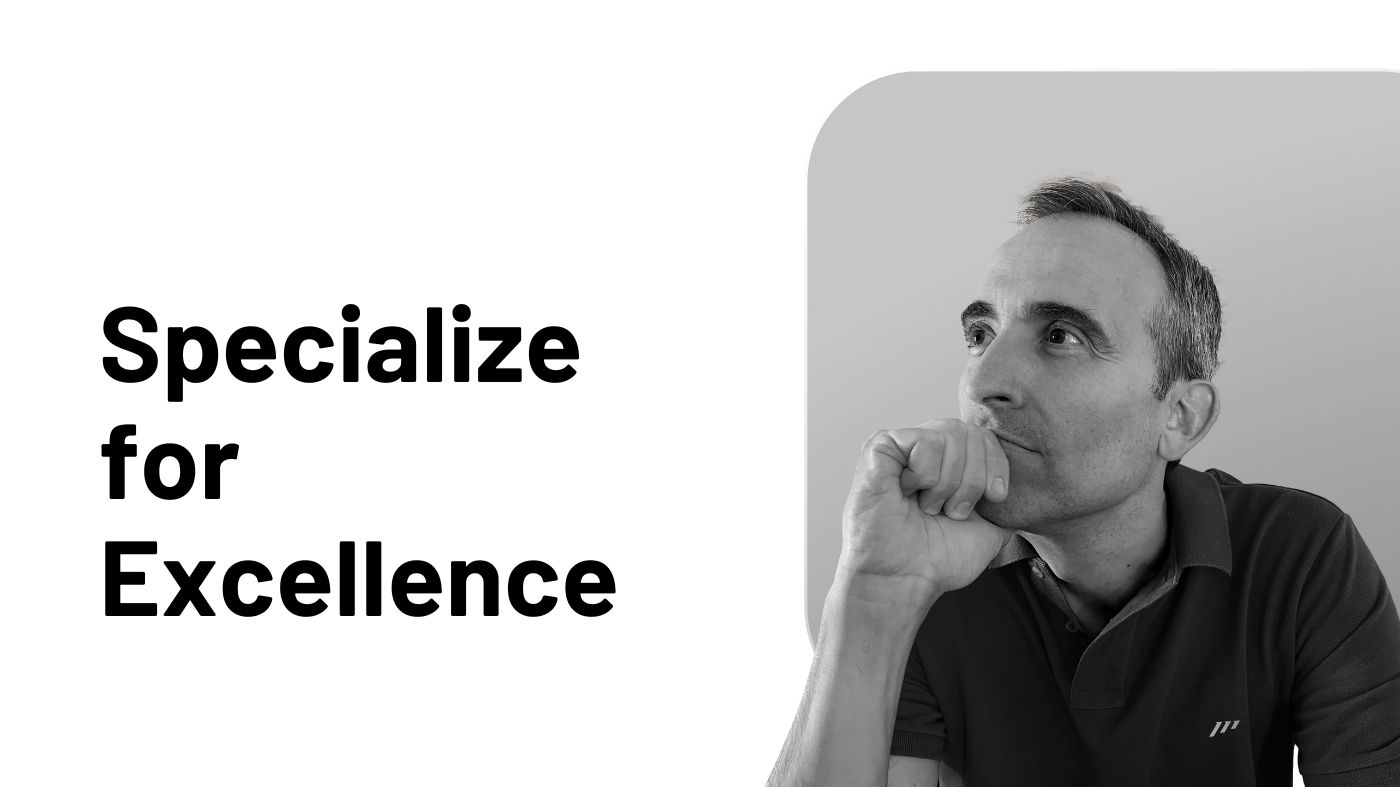Picture this: It’s Tuesday morning.
You need that critical client note from last week’s meeting:
-
Was it in Evernote?
-
Apple Notes?
-
That Notion database?
-
Or buried in your email?
As you frantically search across multiple apps, your 9:00 meeting is starting in three minutes.
Sound familiar?
In today’s hyperconnected world, busy professionals face a painful paradox: we have more productivity tools than ever before, yet we’re drowning in digital chaos.
The typical executive, manager, or entrepreneur juggles between 10-15 different tools, apps, and platforms daily, each promising to be the silver bullet for productivity.
The result?
Digital fragmentation, constant context-switching, and a nagging feeling that important information is falling through the cracks.
If you’ve ever found yourself searching through multiple tools for that crucial note from last week’s meeting, or if you’ve missed deadlines because tasks were scattered across different platforms, you’re experiencing what I call “digital workflow chaos.”
This chaos doesn’t just waste time: it drains mental energy and prevents you from focusing on high-impact work that drives real results.
The good news? The solution isn’t another shiny new tool.
It’s a systematic approach that works with your existing tools, eliminating confusion and creating clarity.
At the Paperless Movement®, we have implemented this exact system with thousands of busy professionals who now save 5-10 hours weekly while capturing, processing and taking action on everything that matters.
In this article, I’ll walk you through a structured approach to streamlining your digital note-taking workflow, one that adapts to your unique professional demands rather than forcing you to adapt to rigid systems.
By analyzing your actual daily scenarios and building customized workflows around them, you’ll develop a note-taking system that eventually runs on autopilot.
Whether you’re a C-suite executive managing multiple teams, a startup founder wearing different hats, or a freelancer juggling various clients, the process outlined here will help you reclaim control of your digital life and transform how you capture, process, and act on information.
The end result?
Less time spent managing your tools and more time leveraging them to achieve what matters most: your goals.
Let’s begin the journey toward digital clarity!
The Six Essential Workflows: Say Goodbye to Digital Chaos
“I’ve tried everything; Evernote, Notion, Obsidian, Apple Notes, but I still can’t find anything when I need it,” a frustrated CEO told me during a recent consultation. “I’m drowning in my own digital mess.”
This executive had fallen into the most common trap: believing that finding the perfect tool would solve his productivity problems.
But here’s the truth we’ve discovered after working with thousands of busy professionals: the number of note-taking scenarios you actually face daily is remarkably small.
At Paperless Movement®, we’ve found something surprising through our work with overwhelmed executives, managers, and entrepreneurs: despite the complexity of our digital lives, all note-taking scenarios actually fit into just six essential workflows in our ICOR® methodology.
Master these, and you’ll transform your digital chaos into clarity.
“The ability to simplify means to eliminate the unnecessary so that the necessary may speak.” – Hans Hofmann
Workflow 1: The Closest to Paper Experience
There’s something deeply satisfying (for many people, though not my case…) about jotting notes in a beautiful notebook: the feel of pen on paper, the freedom to sketch ideas, the tactile connection to your thoughts.
This workflow recreates that experience digitally, bridging the gap between analog satisfaction and digital advantages.
With the right tablet and stylus combination, you gain the natural feeling of writing while unlocking digital superpowers: searchable handwriting, instant organization, and effortless sharing.
You maintain the creative flow of handwriting while eliminating the limitations of physical paper.
Workflow 2: Jot Things Down
Ideas don’t respect your schedule.
They emerge in the shower, during your commute, in the middle of meetings, or just as you’re falling asleep.
This workflow serves as your safety net, ensuring those valuable thoughts never slip away again.
The key is creating a frictionless capture system built around two simple questions:
-
Is this information or action?
-
Is this for me alone or my team?
Those two questions immediately route your thought to its proper destination, whether that’s your personal knowledge base or your team’s project management system.
With practice, this routing becomes automatic, eliminating the mental overhead of deciding where each idea belongs.
Workflow 3: Develop Thinking
Some work requires more than quick capture: it demands focused thought and structured exploration.
Whether you’re drafting a strategic plan, outlining a presentation, or developing a new product concept, this workflow creates the space and structure to develop your thinking from fuzzy concepts to clear direction:
-
Visual mapping tools allow you to see connections between ideas that might otherwise remain hidden.
-
Outlining tools provide the structure to organize complex thoughts into coherent frameworks.
-
Journaling approaches encourage reflection that often leads to breakthrough insights.
The right tools for this workflow act as an extension of your thinking process, removing friction and creating clarity where confusion once reigned.
Workflow 4: Writing and Connecting Information
The average executive spends nearly 23 hours weekly in meetings.
Without an effective note-taking system to capture and connect that information, much of it evaporates like morning dew.
This workflow transforms how you document discussions, decisions, and action items, ensuring they connect to your broader knowledge system rather than disappearing into forgotten notebooks or isolated documents.
The goal isn’t to transcribe every word. It’s to extract the signal from the noise: capturing decisions, commitments, insights, and connections while letting the rest fade away.
When done right, your notes become a bridge between conversation and action, ensuring nothing falls through the cracks.
Workflow 5: Notes on Third-Party Content
We’re constantly bombarded with valuable information from articles, videos, reports, books, and newsletters (what we call in ICOR® “The Outer World”).
Without a system, even the most insightful content slips from memory, its value lost.
This workflow helps you separate signal from noise in the content you consume, extracting only what truly matters and integrating it into your knowledge system.
The process begins with a dedicated inbox where content waits for your attention.
As you process this material, you extract only the most valuable insights, connecting them to relevant projects and ideas.
The result is a curated knowledge base that grows more valuable over time.
Workflow 6: The One That Goes Beyond
The ultimate goal of note-taking isn’t to collect notes: it’s to drive action and results.
This workflow bridges the critical gap between information and action, ensuring your insights translate into outcomes that matter.
By creating direct connections between your knowledge base and your task or project management systems, you ensure ideas don’t just live in isolation: they feed directly into your projects and daily actions.
This is where the true value of your note-taking system emerges, as knowledge transforms into tangible results.
Building Your Personal Framework
Here’s where our approach fundamentally differs from conventional productivity advice: We don’t prescribe a rigid system for you to adopt.
Instead, we help you build workflows around your actual daily scenarios, the real situations you encounter, not theoretical ideals.
Each workflow addresses specific situations you encounter daily.
By mapping your tools to these workflows and understanding when to use each one, you eliminate the constant friction of deciding which tool to use in each moment.
“Technology should serve you, not enslave you.” – Douglas Rushkoff
The secret lies in determining your Single Source of Truth (SSOT) for different types of information:
-
Personal knowledge stays in your personal knowledge management system.
-
Team knowledge lives in your business knowledge management system.
-
Personal actions go into your task management system.
-
Team actions belong in your project management system.
With these destinations clearly defined, every piece of information finds its proper home without hesitation or confusion.
Now that you understand the framework, let’s get practical about implementation.
In the next section, we’ll analyze exactly how to customize these workflows to your specific needs.
But first, I invite you to reflect:
Which of these six workflows, if mastered today, would most dramatically improve your productivity tomorrow?
That’s where you should start.
Understanding Your Digital Needs: The Matrix Approach
“I understand the concept,” my client Rebecca, a marketing director, told me, “but how do I actually implement this with all the different situations I face throughout my day?”
This is exactly where most productivity systems fail: they offer theoretical frameworks without practical application paths.
Let me share the exact implementation method I used with Rebecca that transformed her digital chaos into a streamlined system within just two weeks.
First, identify the real-world scenarios you encounter within each workflow.
For instance, within the “Jot Things Down” workflow, you might recognize these common situations:
-
Capturing ideas that suddenly strike you.
-
Taking quick notes during meetings or calls.
-
Saving interesting links or references.
Next, analyze each scenario by considering three key variables:
-
Context: Are you at your desk or on the go?
-
Content type: Is this information (knowledge) or action (task)?
-
Impact scope: Does this affect just you or your team?
This three-dimensional analysis creates a decision matrix that guides exactly where and how to process each type of thought or idea.
Let me show you how this matrix transforms abstract concepts into concrete actions through a real-world example.
When an idea strikes, eight possible scenarios emerge based on our three variables:
-
Information for yourself while at your desktop.
-
Action item for yourself while at your desktop.
-
Information for your team while at your desktop.
-
Action item for your team while at your desktop.
-
Information for yourself while on the go.
-
Action item for yourself while on the go.
-
Information for your team while on the go.
-
Action item for your team while on the go.
Each of these scenarios deserves a clear, predefined process. For example:
-
When personal information comes to mind while at your desktop, it might go directly into your knowledge management tool.
-
But when you’re on the go, you might capture it in a quick-entry tool and process it later when back at your desk.
-
Similarly, an action item for your team requires different handling than a personal reminder.
This level of specificity might initially seem excessive. But consider how much mental energy you currently spend deciding where to put each piece of information.
By predetermining these pathways, you eliminate decision fatigue and create automatic routes for your information flow.
Here’s what makes this approach revolutionary: it works with your existing tools.
When I implemented this with the executive team at a mid-sized technology company, they kept using their preferred tools but gained immediate clarity about when to use each one. Within days, their “where should I put this?” confusion vanished completely.
For each scenario in your matrix, define:
-
The capture tool: where information first lands.
-
The processing steps: what happens to it next.
-
The final destination: its Single Source of Truth (SSOT).
Some scenarios might use the same tool for all three steps. Others might employ an intermediate tool before reaching the final destination.
For instance, when capturing team-related information on your phone, you might use a quick-capture app initially, then process that information into your team’s knowledge base when back at your desk.
The goal isn’t perfection or rigid adherence to rules. It’s creating clear pathways that become second nature over time. Start with the most common scenarios you face, then expand your matrix as needed.
With this systematic approach, you’ll transform your digital tools from a source of chaos into a seamless extension of your thinking process. Information will flow naturally to where it belongs, freeing your mind to focus on what truly matters.
Now that you understand the matrix approach, let’s move to the most practical question: exactly which tools should you use for each scenario?
The answer might surprise you.
Tool Selection Strategy: Implementing Your Decision Matrix
“But which app is the best for note-taking?”
This is the question I hear most frequently, and it’s exactly the wrong question to ask.
The truth is that the perfect tool doesn’t exist.
What matters is having the right tool for each specific scenario you face.
This is where your decision matrix becomes invaluable.
Let me show you exactly how I’ve implemented this for my own workflows, saving me over 7 hours every week in searching, context-switching, and digital organization.
This isn’t about recommending specific tools, but rather demonstrating the process of creating clear pathways for your information.
For capturing and processing ideas and actions, I’ve mapped these scenarios to specific tools:
-
When I’m at my desktop and an idea strikes that’s purely informational and only affects me (Scenario 1), it goes directly into Tana. This powerful knowledge management tool becomes the Single Source of Truth for my personal insights, research, and insights.
-
For personal action items captured at my desktop (Scenario 2), I use either Todoist or Linear, depending on the nature of the task. Quick actions that take under 15 minutes (what we call “Speedies” in ICOR®) go into Todoist, while more complex tasks that require tracking go into Linear.
-
Team-related information captured at my desktop (Scenario 3) follows a different path. At Paperless Movement®, we store this in ClickUp, which serves as our shared knowledge base. This ensures everyone has access to crucial information when they need it.
-
Similarly, team actions identified at my desktop (Scenario 4) go straight into ClickUp, which functions as both our Business Knowledge Management (BKM) and Business Project Management (BPM) tool. This creates a seamless connection between information and action.
The mobile scenarios require more nuance:
-
When I capture personal information while on the go (Scenario 5), I use Tana’s mobile app, sending ideas to my inbox for proper processing later when I’m back at my desk.
-
For personal action items captured on my mobile device (Scenario 6), Todoist becomes my intermediate capture tool due to its speed and simplicity. Later, I process these items, moving complex tasks to Linear if needed, while quick “Speedies” stay in Todoist with appropriate execution dates.
-
Team-related information captured on the go (Scenario 7) starts in Tana as a temporary holding place, then gets properly processed into ClickUp when I return to my desktop. The same applies to team action items (Scenario 8): Tana first, then proper processing in ClickUp later.
What’s transformative here isn’t the specific tools I’ve selected. It’s the absolute clarity I’ve created about where each type of information belongs in every situation I encounter.
This clarity eliminates decision fatigue, that mental drain that comes from constantly deciding “where should I put this?” dozens of times daily.
When you remove this friction, you reclaim substantial mental bandwidth for your actual work.
This process should be repeated for each of the six workflows, creating a comprehensive note-taking system that covers every scenario you encounter in your professional life.
If this sounds overwhelming, remember: our lives are usually much simpler than we imagine.
Most of us deal with relatively few scenarios repeatedly.
The analysis process helps clarify this, allowing you to build focused solutions that transform your productivity.
The key is starting small.
Don’t try to map every possible scenario at once. Begin with the most common situations you face daily, create clear processes for those, and expand gradually.
Maintaining and Evolving Your Workflow System
“My system was working perfectly until…”
This is how most productivity stories end with an unexpected change that breaks everything.
A new team role. A company-wide tool switch. A project unlike anything you’ve handled before.
This happened to Jason, a product manager I worked with last year.
His meticulously designed workflow collapsed when his company merged with another, forcing him to adapt to new tools and team processes.
“I felt like I was starting from scratch,” he told me.
But he wasn’t and neither will you be when change inevitably comes.
Even the most perfectly designed note-taking system needs evolution. Like a living organism, your digital workflow must adapt as your professional demands change.
The secret to long-term success isn’t building a perfect system it’s building an adaptable one.
“A system is only as effective as your discipline to use it.” – Cal Newport
The power of documentation
“The document that saved my career,” Jason called it.
He was referring to his simple two-page system guide a reference document outlining his decision matrix and tool choices for each workflow scenario.
This unassuming document became his lifeline during the company merger, allowing him to:
-
Maintain consistency when stress was highest.
-
Quickly identify which new tools could replace his previous ones.
-
Explain his workflow needs clearly to his new team.
Your documentation doesn’t need to be elaborate just clear enough that you could rebuild your workflow if necessary.
Think of it as the blueprint for your productivity system something you can refer to when things change or when you need to explain your process to others.
Simplify, don’t complicate
The natural tendency as you use your note-taking system is to add complexity more tools, more steps, more “what if” scenarios.
Resist this urge.
Instead, regularly challenge yourself with these questions:
-
Could this process involve fewer steps?
-
Could I consolidate tools here?
-
Is this complexity actually necessary?
The most sophisticated productivity system isn’t necessarily the most effective. Often, the simplest solution proves most durable.
This is why many Paperless Movement® members eventually reduce their tools rather than increase them finding that 3-4 well-chosen tools cover 95% of their needs.
Embrace failure as feedback
Information will inevitably slip through the cracks.
You’ll find yourself saying: “Where did I put that note from the client call last week?” or “I know I captured that idea somewhere…”
When this happens and it will resist the temptation to immediately overhaul your entire system. This reactionary approach leads to constant tinkering without improvement.
Instead, treat each failure as valuable data:
-
Analyze exactly which scenario wasn’t addressed.
-
Identify the smallest possible adjustment needed.
-
Implement just that change, nothing more.
This targeted approach gradually strengthens your system without creating unnecessary complexity.
As one ICOR® practitioner told me: “My system improves with each failure. Every time something falls through the cracks, I patch that specific hole, making the entire system more robust.”
The invisible system
The ultimate measure of success isn’t how sophisticated your workflow appears it’s how little you notice it.
Your note-taking system should eventually become invisible a set of habits so ingrained they require almost no conscious thought.
When deciding where to capture an idea becomes as automatic as reaching for your phone, you’ve achieved the true goal: cognitive automation.
This mental freedom is transformative. It allows you to focus entirely on creative and strategic thinking rather than the mechanics of managing information.
As one executive told me after implementing her matrix: “I used to spend mental energy all day deciding where to put things. Now I just… work. The system handles the rest.”
The path to automaticity
Be patient with this process.
Some aspects of your workflow will become second nature within days. Others might take months to fully internalize. The timeline depends on how frequently you encounter each scenario.
The key is consistency following your defined pathways even when shortcuts seem temporarily easier.
Each time you follow your system, you strengthen the neural pathways that eventually make these processes automatic.
As these processes become ingrained habits, you’ll experience what every productive professional seeks: the ability to capture, process, and use information effortlessly.
Your digital tools will serve as a seamless extension of your thinking rather than an additional burden to manage.
And that is the ultimate goal not just better organization, but true mental freedom.
Conclusion: From Digital Chaos to Effortless Productivity
Imagine walking into your office tomorrow morning:
-
Your phone pings with a notification. Without thinking, you capture it in exactly the right place.
-
An idea strikes during your first meeting. You jot it down, knowing exactly where it belongs.
-
A colleague shares an important document. You process it effortlessly into your knowledge system.
This isn’t a fantasy: It’s how work feels when you’ve mastered your digital workflows.
Throughout this article, we’ve transformed the overwhelming complexity of digital tools into a streamlined note-taking system designed specifically for busy professionals like you.
We began by identifying the six essential workflows that cover every note-taking scenario you encounter:
-
The Closest to Paper Experience
-
Jot Things Down
-
Develop Thinking
-
Writing and Connecting Information
-
Notes on Third-Party Content
-
The One That Goes Beyond
We then created a decision matrix based on three simple variables (context, content type, and impact scope) giving you clear pathways for routing information no matter the situation.
This matrix eliminates the mental tax of constantly deciding where information belongs, freeing your brain to focus on content rather than its management.
By mapping specific tools to each scenario, we’ve established a system where every piece of information has its designated home, its Single Source of Truth.
The beauty of this approach? It’s completely adaptable to your unique situation.
You’re not adopting someone else’s rigid system.
You’re creating a customized framework that fits your specific needs and evolves with your professional life.
Take action today
Remember, the goal isn’t digital perfection. It’s mental freedom, the ability to capture, process, and use information without friction, allowing your full attention to focus on the creative and strategic work that truly drives results.
Start small. Begin with just one workflow that causes you the most frustration today:
-
Identify the common scenarios you encounter within that workflow.
-
Apply the 3-variable matrix to each scenario.
-
Decide which tools to use for each case.
-
Document your process in a simple reference guide.
As that first workflow begins to run on autopilot, expand to the next one.
Within weeks, not months, you’ll notice the difference.
Day by day, workflow by workflow, you’ll build a digital productivity system that feels less like another task to manage and more like an extension of your thinking.
The digital chaos ends today. Your streamlined, intentional productivity journey begins now.
What workflow will you master first?







